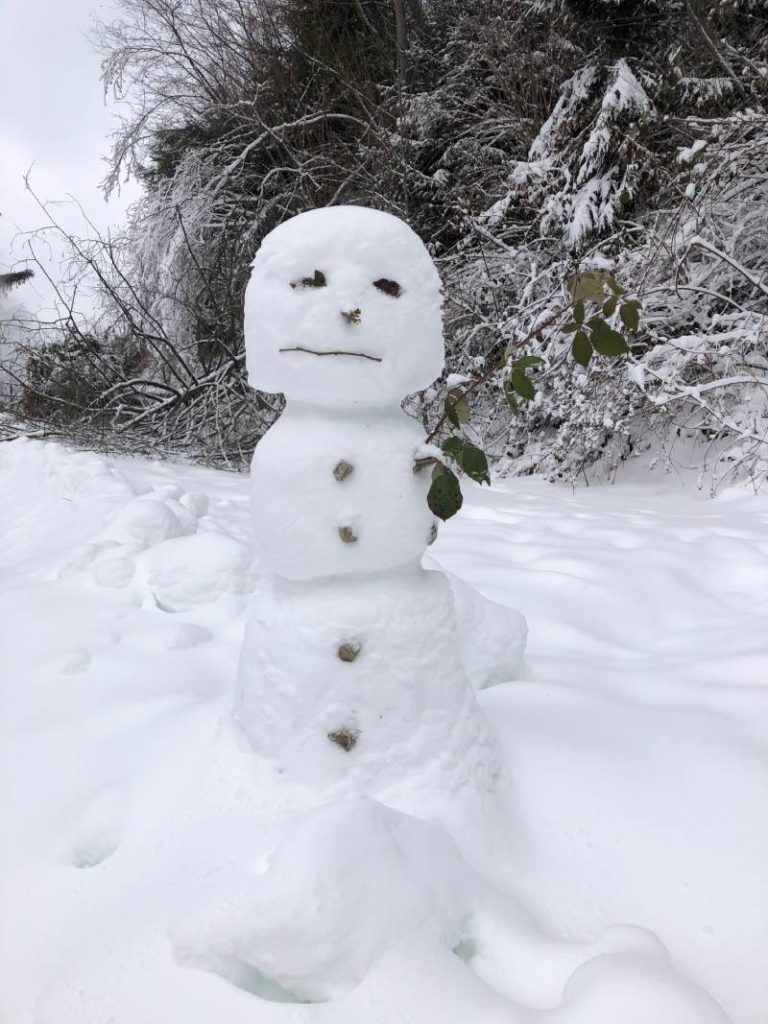What’s winter blue? Is it a real thing? How common are winter blues? How do you break the winter blues? Click here for more information
As winter blankets the world in a serene hush and daylight becomes a precious commodity, many find themselves wrestling with the subtle yet pervasive grip of the winter blues.
The term, often casually used to describe the seasonal dip in mood and energy, raises questions about its legitimacy and prevalence. In this exploration, we unravel the mysteries of the winter blues, examining its commonality, causes, and practical strategies to break free from its grasp.
From the nuanced experiences of individuals to the broader landscape of mental well-being, let’s embark on a journey to understand and conquer the winter blues.
What’s winter blue? Is it a real thing?
Winter blues, often referred to as the “winter slump” or “seasonal blues,” is a term that resonates with many people as the colder months settle in. But what exactly is winter blue, and is it a real phenomenon?
The concept of winter blues typically revolves around the feelings of low energy, moodiness, and a lack of motivation that some individuals experience during the winter season. It’s essential to note that while these feelings are common, the term “winter blues” is not a clinically recognized condition like Seasonal Affective Disorder (SAD).

Seasonal Affective Disorder is a subtype of major depressive disorder that occurs at specific times of the year, usually during fall and winter when there is less sunlight. SAD is characterized by more severe symptoms than the general winter blues and often requires professional intervention.
So, is winter blue a real thing? Yes, but it’s crucial to distinguish it from SAD and other mental health conditions. Winter blues are more about the mild, temporary changes in mood and energy levels that many people experience when the days get shorter and colder.
Several factors contribute to the winter blues. One significant player is the reduction in sunlight exposure during the winter months. Sunlight helps regulate our circadian rhythm and the production of serotonin, a neurotransmitter that contributes to feelings of well-being and happiness. Less sunlight can lead to disruptions in these processes, contributing to the winter blues.
Another factor is the impact of colder weather on outdoor activities. During winter, people tend to spend more time indoors, leading to a decrease in physical activity. Exercise is known to boost mood by releasing endorphins, so a reduction in physical activity can contribute to feelings of lethargy and low energy.
To combat winter blues, consider incorporating strategies into your routine. First and foremost, maximize exposure to natural light by spending time outdoors during daylight hours. If outdoor activities are limited, consider using light therapy lamps that mimic natural sunlight.
Maintaining a regular sleep schedule and engaging in regular exercise can also play a significant role in alleviating winter blues. Exercise not only enhances mood but also improves overall well-being. Additionally, practising stress-management techniques, such as meditation or deep breathing exercises, can help combat the seasonal downturn in mood.
It’s important to recognize when the winter blues may be evolving into something more serious, such as Seasonal Affective Disorder. If you find that your symptoms are persistent, severe, or significantly impacting your daily life, it’s advisable to seek professional help. Mental health professionals can provide guidance and support, and, if necessary, recommend appropriate treatments.
How common are winter blues?
As the temperature drops and daylight hours dwindle, many people find themselves grappling with the so-called “winter blues.” But just how common are these seasonal mood changes, and what exactly do they entail?
Winter blues, a colloquial term for the milder, temporary shifts in mood and energy levels during the colder months, are a widespread phenomenon. It’s estimated that a significant portion of the population experiences some degree of winter blues each year. While the intensity and duration can vary from person to person, this seasonal mood shift is generally considered a normal response to the changing weather and reduced sunlight exposure.

One of the primary factors contributing to the winter blues is the decrease in daylight during fall and winter. Exposure to natural sunlight plays a crucial role in regulating our internal body clock, also known as the circadian rhythm. Less sunlight can disrupt this rhythm, leading to alterations in sleep patterns and mood.
Another factor contributing to the prevalence of winter blues is the impact of weather-related changes on daily routines and activities. Colder temperatures often discourage outdoor activities, leading to reduced physical exercise. Exercise is a known mood booster, and a lack of it can contribute to feelings of lethargy and a decline in overall well-being.
So, just how common are winter blues? Studies suggest that anywhere from 10% to 20% of people may experience mild winter-related symptoms, such as low energy, irritability, or a slight dip in mood. It’s crucial to note that these symptoms are usually temporary and don’t reach the severity of clinical conditions like Seasonal Affective Disorder (SAD).
Seasonal Affective Disorder is a more intense form of winter-related depression that affects a smaller percentage of the population, typically around 1% to 5%. Unlike the common winter blues, SAD involves more pronounced symptoms, such as persistent sadness, loss of interest in activities, and changes in sleep and appetite.
While winter blues are common, they are not uniform. Some individuals may hardly notice any changes in their mood, while others may find the winter months more challenging to navigate. It’s essential to recognize the spectrum of experiences and understand that what may be a mild inconvenience for one person can be more impactful for another.
Managing winter blues often involves simple lifestyle adjustments. Maximizing exposure to natural light, even on cloudy days, can help regulate the circadian rhythm. Additionally, incorporating regular exercise into the routine can counteract the sedentary effects of colder weather and boost overall mood.
How do you break the winter blues?
As the winter season settles in, many people find themselves grappling with the winter blues—those moments of low energy and moodiness that often accompany colder, darker days. The good news is that there are practical and straightforward strategies to break free from the winter blues and infuse your days with positivity.

- Let There Be Light: Exposure to natural light is a key player in managing the winter blues. Try to spend time outdoors during daylight hours, even if it’s just for a short walk. If outdoor activities are limited, consider investing in a light therapy lamp. These lamps mimic natural sunlight and can be a game-changer in regulating your circadian rhythm.
- Move Your Body: Physical activity is a powerful mood booster. While the winter chill may make outdoor activities less appealing, finding indoor exercise routines that you enjoy can make a significant difference. Whether it’s a dance workout, yoga, or a home exercise video, incorporating movement into your daily routine can elevate your mood.
- Stick to a Routine: The winter blues often thrive on disruptions to your daily routine. Establishing a consistent daily schedule can help create a sense of stability and predictability. Aim for regular wake-up times, meal schedules, and bedtime routines. This can have a positive impact on your overall well-being.
- Brighten Your Space: Make your living environment a haven of warmth and light. Open curtains during the day to let in natural light, and consider adding bright, cheerful decor to your space. Surrounding yourself with uplifting colours and images can positively influence your mood.
- Socialize and Connect: Winter blues can sometimes lead to social withdrawal. Make a conscious effort to stay connected with friends and family. Whether through video calls, social media, or in-person meet-ups, maintaining social connections provides emotional support and combats feelings of isolation.
- Mindful Practices: Incorporate mindfulness and relaxation techniques into your routine. Practices such as meditation, deep breathing, or progressive muscle relaxation can help alleviate stress and promote a sense of calm. These practices are accessible and can be done in the comfort of your home.
- Indulge in Hobbies: Engage in activities you enjoy to counteract the winter doldrums. Whether it’s reading, crafting, cooking, or playing a musical instrument, immersing yourself in hobbies provides a sense of accomplishment and joy.
- Treat Yourself with Healthy Choices: Supercharge your system. While it’s tempting to indulge in comfort foods during the winter, incorporating a balanced diet rich in fruits, vegetables, and whole grains can positively impact your mood and energy levels.
- Plan Exciting Activities: Look forward to something exciting by planning activities or events. This anticipation can lift your spirits and add a sense of purpose to your days. It could be as simple as a movie night, a weekend getaway, or trying out a new hobby.
- Seek Professional Help if Needed: If the winter blues persist and significantly impact your daily life, consider seeking professional help. Mental health professionals can provide guidance and support tailored to your specific needs.
Conclusion
In the symphony of seasonal changes, the winter blues may play a subtle but impactful tune in the lives of many. Through our exploration, we’ve uncovered the commonality of this phenomenon and shed light on the simple yet effective strategies to mitigate its effects. As the days grow shorter and the air colder, the power to break free from the winter blues lies within our grasp.
Remember, in the dance of seasons, the winter blues may be a fleeting partner, but with understanding and proactive steps, we can twirl towards a brighter, more vibrant tomorrow.





